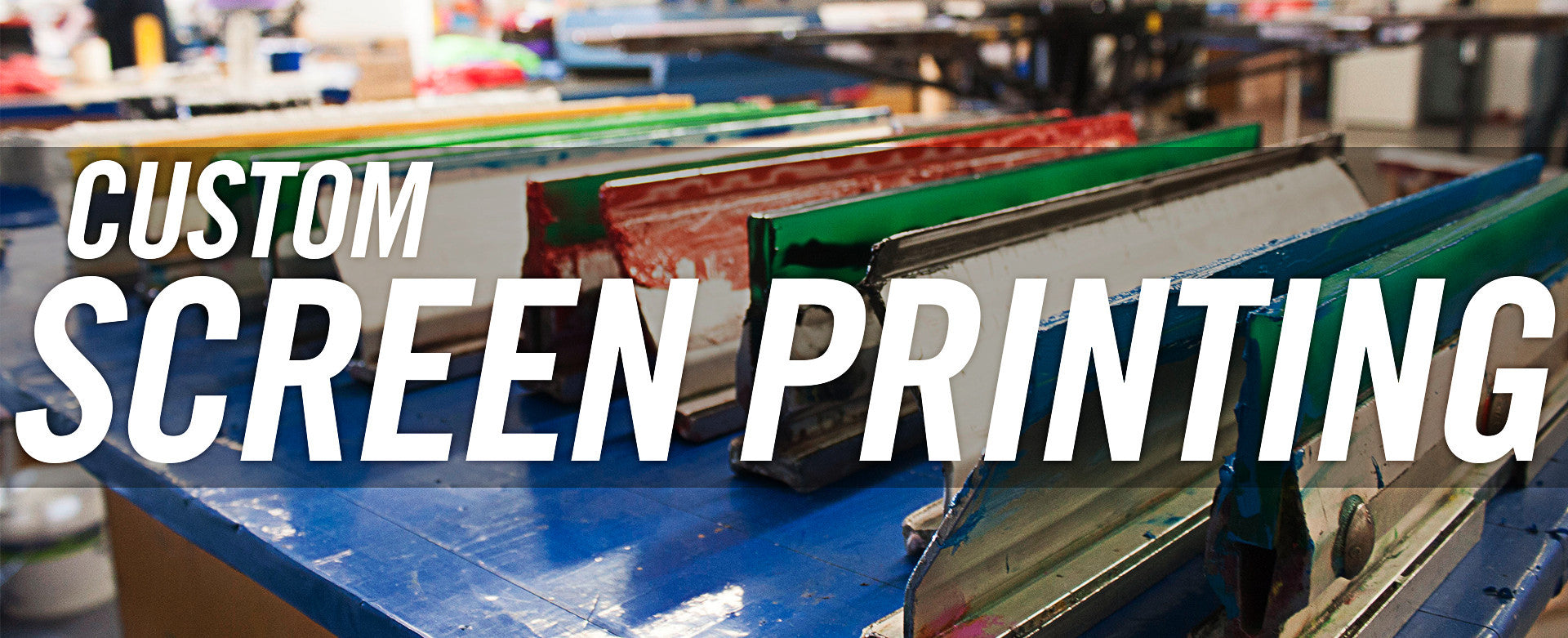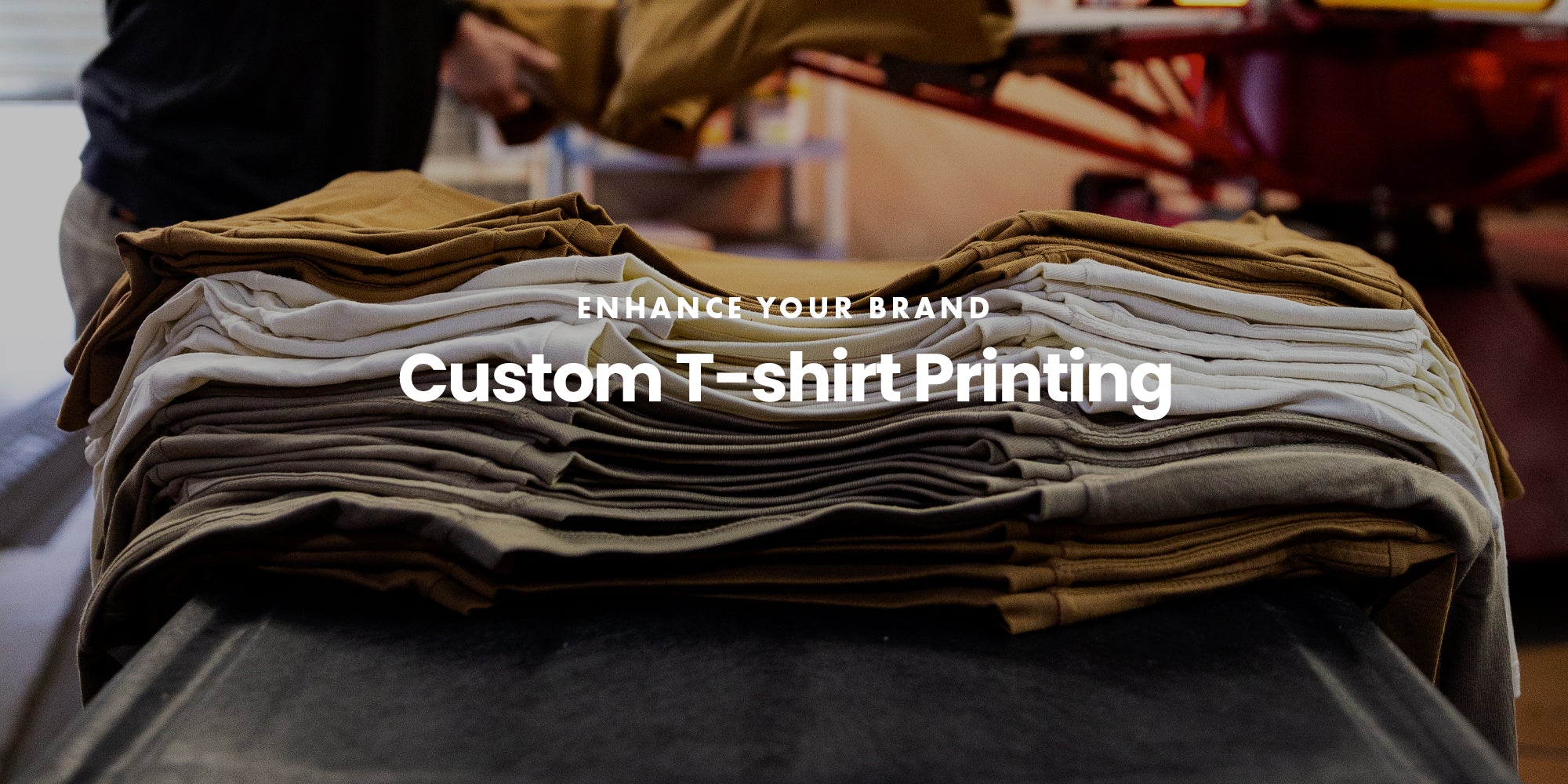High-Quality Custom Screen Printing for Team Apparel
High-Quality Custom Screen Printing for Team Apparel
Blog Article
Display Printing Uncovered: Everything You Need to Know About Tee Shirt and Garment Printing Strategies
If you've ever asked yourself just how those vivid layouts wind up on your preferred tees, you're in the best place. Screen printing is a fascinating approach that integrates art with strategy, using limitless opportunities for creative thinking. Recognizing the principles, from tools to ink selections, can greatly influence your outcomes. Ready to check out the essential aspects that make screen publishing an art form? Let's discover the information that can elevate your tasks.
The Basics of Screen Printing: How It Functions
When you plunge into screen printing, you'll find it's both a science and an art. At its core, screen printing involves creating a pattern, or display, that allows ink to travel through only in specific areas (screen printing kit). You begin by choosing your design and preparing your screen with a light-sensitive emulsion. Once you reveal this emulsion to light, it hardens, leaving your layout as a negative room.
Next, you'll mix your inks and prepare your printing surface area. Setting the display over the fabric, then use a squeegee to push ink via the display onto the garment. This process calls for accuracy, as you want clear, lively prints. After printing, you'll treat the ink with heat, ensuring it follows the fabric and lasts through washes. Each step is essential, and mastering them will certainly boost your screen printing skills, changing simple garments right into unique, expressive items.
Kinds of Screen Printing Methods
Once you comprehend the essentials of display printing, it's time to explore the numerous strategies that can boost your layouts. One popular approach is conventional screen printing, where ink is pressed via a stenciled screen. This technique is terrific for vibrant, lively colors. Then there's water-based ink printing, which uses a softer feel and is green, but it calls for a different technique to curing.
If you're going for great information, take into consideration discharge printing. This method removes dye from the fabric, leaving a soft, classic look. Another option is plastisol printing, known for its resilience and vibrant colors, making it a favorite for many brand names. Experiment with halftone printing to create slope effects and detailed styles. Each technique has its unique beauty, so don't hesitate to attempt them out to locate what fits your style best!
Crucial Equipment for Screen Printing
To attain spectacular outcomes in screen printing, having the best equipment is essential. First, you'll require a tough display printing frame, which holds the mesh that moves your style onto the garment. Next, buy top quality mops; these are necessary for applying ink evenly throughout the screen. You'll additionally call for a good exposure device to produce your displays, as well as a washout booth for cleansing them after use. A reliable warm resource, like a conveyor clothes dryer or warm press, is critical for curing your prints to ensure long life. Don't fail to remember an appropriate work space, equipped with tables and storage space for your materials. Lastly, safety equipment, such as masks and gloves, will keep you safe from chemicals and inks. With the right devices, you'll be well on your method to producing professional-quality prints.
Selecting the Right Inks and Products
When choosing inks and products for display printing, you need to consider the kind of ink that functions ideal for your job. Think of fabric compatibility to ensure your styles look wonderful and last long. Discover environment-friendly ink choices to make your printing process much more sustainable.
Sorts Of Display Inks
Selecting the ideal screen ink is essential for accomplishing lively, resilient prints that fulfill your job's demands. There are several kinds of screen inks to take a look at. Specialized inks, such as metallic or glow-in-the-dark, can include unique impacts to your layouts.

Fabric Compatibility Considerations
Comprehending fabric compatibility is important for achieving high-grade display prints, specifically given that various products respond distinctly to numerous inks. When selecting inks, take into consideration the material kind-- cotton, polyester, or blends. For cotton, water-based inks function well, offering soft qualities and breathability. Polyester, on the other hand, commonly requires plastisol inks for much better attachment and dynamic colors. You may need to utilize a combination of both kinds if you're publishing on blends. Always examine your inks on sample fabric to assure they adhere correctly and preserve shade stability. Furthermore, remember that textile weight and structure can impact the final end result, so choosing the appropriate ink and product combo is essential for your project's success.
Eco-Friendly Ink Options
Environment-friendly inks are ending up being a popular selection for screen printers who intend to decrease their ecological impact while keeping top quality. When selecting inks, take into consideration water-based inks, which are less hazardous and much easier to tidy up compared to typical solvents. These inks bond well with materials, providing vivid results without harmful chemicals. You could also check out eco-solvent inks that make use of less unpredictable organic compounds (VOCs), making them a safer option for both your health and the earth.
In addition, search for inks made from eco-friendly sources, such as soy or vegetable-based choices. By selecting the ideal inks and products, you'll not just develop stunning layouts yet also add to a more sustainable printing procedure. Make the switch, and your prints will reflect your commitment to the setting!
Preparing Your Layout for Screen Printing

File Format Demands
To guarantee your style looks sharp and vibrant on textile, you'll need to pay close interest to submit style demands for screen printing. Beginning with vector data like AI or EPS, as they can be scaled without More Info losing high quality. If you utilize raster photos, select high-resolution documents, such as TIFF or PNG, ideally at 300 DPI. Stay clear of using JPEGs, as they can lose quality when resized. Also, make certain your design has a transparent history to stop unwanted white edges on your prints. Finally, keep shade settings in mind; CMYK is click here for info typical for screen printing, so convert your RGB develops as necessary. By complying with these standards, you'll establish your artwork up for a successful print.
Shade Splitting Up Strategies
Shade splitting up is an important action in preparing your design for screen printing, and understanding it can substantially boost your print top quality. You'll need to break your layout into specific shades, as each color calls for a different display during printing. Begin by recognizing all the shades in your style and create layers each. You can utilize software application like Adobe Photoshop or Illustrator to isolate and separate shades properly. Be specific to save each layer as a separate documents, generally in a format like TIFF or PSD. This accuracy not only guarantees exact color representation yet additionally simplifies the printing process. By focusing on shade separation, you'll accomplish specialist and dynamic outcomes in your screen-printed garments.
Resolution and Dimension
Accomplishing the most effective lead to display printing begins with guaranteeing your design has the best resolution and dimension. Ideally, your art work ought to be at least 300 DPI (dots per inch) for sharp, clear prints. If you make use of lower resolution, your end product might look less than professional and pixelated.
When it comes to size, consider the measurements of your print area. Layout your art work to match the final print size, ideally developing it in the actual dimensions you'll be publishing. By doing this, you'll avoid any unanticipated scaling issues.
Always inspect your layout in both vector and raster formats. Vector graphics can be scaled without losing high quality, making them perfect for screen printing. Preparing properly will guarantee your style looks remarkable on every Continue garment!
Step-by-Step Display Printing Refine
Display printing is a vibrant process that allows you to create dynamic styles on various surface areas. To begin, you'll require a display, solution, and your selected ink. Prepare your display by cleaning it extensively. Next, apply the solution evenly and let it dry in a dark area. When completely dry, reveal your display to light with your layout positioned on it, which will certainly set the emulsion where the light hits, producing a stencil - screen printing kit.
Put ink onto the screen and use a squeegee to press the ink via the pattern onto the material. Raise the screen thoroughly and allow the print completely dry. You have actually efficiently display printed your layout.
Tips for Successful Display Printing Projects
While you're diving right into your screen printing jobs, keep in mind that prep work is vital to success. Begin by gathering all your materials-- inks, garments, displays, and squeegees. A clean workspace aids avoid undesirable errors, so clean up before you start.
Next, validate your artwork is high-resolution and effectively sized for your garment. Test your screen for appropriate direct exposure and clean it extensively to stay clear of spots. When blending your inks, follow the supplier's guidelines to accomplish the right uniformity.
During printing, apply also pressure with your squeegee for consistent outcomes. Do not rush; take your time to validate each print fulfills your requirements. After printing, allow your garments dry totally prior to dealing with or packaging them.
Finally, constantly keep a sample of your job for future reference. By doing this, you can examine your progression and enhance your techniques over time. Pleased printing!

Often Asked Concerns
For how long Does It Require To Set up a Display Printing Work?
Establishing a display printing task generally takes about half an hour to an hour. You'll prepare the screens, mix inks, and readjust journalism. The time varies based on intricacy and experience, so remain arranged!
Can I Publish on Different Material Keys In Using the Exact Same Method?
Yes, you can print on various textile kinds utilizing the exact same method, however you'll need to readjust your inks and setups. Some fabrics absorb ink differently, so trying out warranties the very best outcomes for each material.
What Prevail Mistakes to Stay Clear Of in Screen Printing?
When display printing, prevent common blunders like utilizing the incorrect ink, disregarding correct exposure times, or missing pre-press checks. Always test your configuration and maintain tidy displays to guarantee quality results each time.
How Can I Effectively Tidy and Keep My Screen Printing Equipment?
To effectively clean and keep your screen printing tools, you need to routinely clean screens with proper solvents, check squeegees for wear, and ensure all tools are saved dust-free and dry. Consistency improves and prevents expensive repair services performance.
Is Screen Printing Eco-friendly Compared to Various Other Methods?
Display printing can be much more eco friendly than other techniques, specifically if you utilize water-based inks and eco-conscious materials. By picking lasting products and methods, you minimize waste and reduce your influence on the planet.
Screen Printing Uncovered: Every Little Thing You Need to Know Regarding Tee and Garment Printing Strategies
At its core, screen printing involves creating a stencil, or screen, that enables ink to pass via just in specific areas. Position the screen over the material, then utilize a squeegee to press ink with the screen onto the garment. One popular technique is typical display printing, where ink is pressed via a stenciled display.When picking inks and products for screen printing, you need to take into account the type of ink that works finest for your job.
Report this page